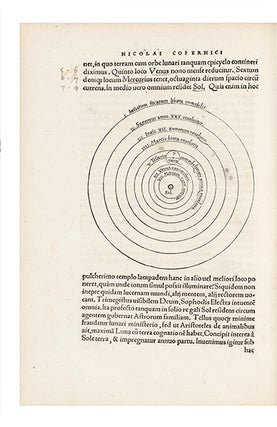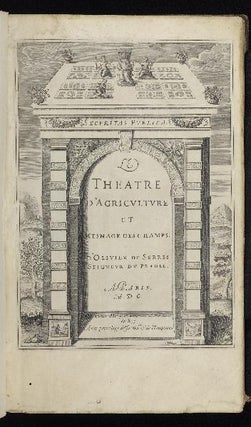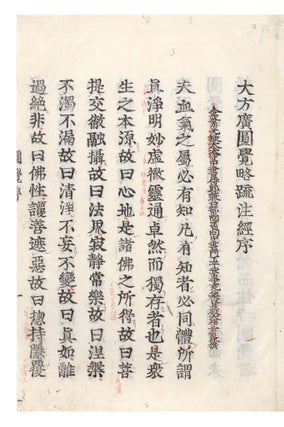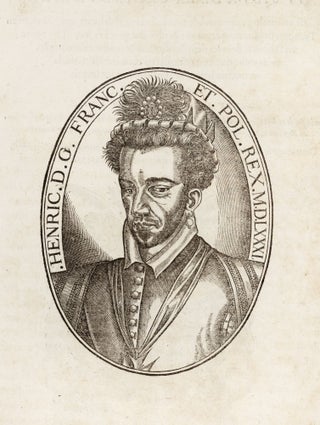Star Worship in Japan
Two finely illustrated handscrolls on fine paper related to star worship, the first entitled at beginning “Chojo hitoki” [“Ascending to the Heavens (or possibly Mt. Meru, the central axis of the universe in Buddhist cosmology), Written Down”]; the second scroll with indecipherable title on outer front endpaper.
Numerous fine paintings & diagrams throughout, using blue, green, red, gray, yellow, much gold, silver, & flesh-colored pigments. Siddham script in several places. Two scrolls (185 x 17,660 mm.; 175 x 9210 mm.), each with gold-speckled inner endpapers at front, dark blue paper on outsides. At the end of the first scroll, a note states these texts were first written in 1192 (Kenkyū 建久 3) & copied on an auspicious day in the 12th month of Genna 元和 5 (this part of Genna 5 corresponds to 1620); the second scroll is also dated at end “the 12th month of Genna 5.”
These two scrolls are related to a kind of Daoist-influenced star worship that was associated with esoteric Buddhism. This practice became popular within the Japanese aristocracy in the medieval period. It drew on several strands of thought imported from China that were synthesized in Japanese religious practice. Buddhism, as it appeared when imported to China from India and Central Asia in the first millennium CE, carried with it astronomical and astrological knowledge, including an identification of the planets and their association with the calendar (e.g., the association between the planets and the days of the week, still apparent in the modern Japanese names for them). In China, this knowledge became influenced by Daoism, exemplified, for example, by the worship of the stars of the Big Dipper (Ch.: beidou, J.: hokuto 北斗). In medieval Japan, star worship under the auspices of esoteric (Shingon and Tendai) Buddhism became popular and highly ritualized. One star-related ritual expressed the worship of an individual’s birth and year stars. During these rituals, offerings were made to a star or a constellation to obtain fortune or longevity. Such rituals are described in these two scrolls.
Mandala, dhāraṇī, and mudrā were important features of ritualized star worship, and the three of them are present in the first scroll. There is a fine series of 158 flesh-toned paintings of mudrā , gestures of the hand, depicted and labeled. Mudrā were hand and arm gestures made during the course of ritual practice or depicted in images of buddhas, bodhisttvas, tantric deities, and other Buddhist images. With the development of Mahayana and Vajrayana iconography, the number of mudrā proliferated, and reaching the hundreds. Dhāraṇī were incantations and are presented as lists of syllables written in the Indic Siddham script. There is also a diagram (a mandala?) depicting the Big Dipper (the legends reference the earthly branches, each listed as either yin or yang).
The second scroll includes, among other things, a list of the Seven Planets (sun, moon, and the planets of the solar system minus Neptune and Pluto) and associated Buddhist deities, stars in the constellation of the Big Dipper, and years in the sexagenary calendrical cycle. Through this list, an individual’s personal star can be determined. Further into the scroll, the layout of the altar (featuring, e.g., silver coins, food offerings, and candles) and the conduct of the rituals for various kinds of worship are described and illustrated in a series of scenes. Ritual objects like mandalas with Siddham characters are depicted as well. The instructions for the conduct of these rituals include the performance of combinations of mudrā and dhāraṇī, associated with the mystery of the body and the mystery of speech respectively.
In addition to the importance of the Big Dipper, the Daoist influence on these scrolls is evident in its mention of deities such as the Dongyue emperor and Huang Shigong.
Very good, preserved in a modern box. Some worming, carefully repaired.
Price: $13,500.00
Item ID: 9137

![Item ID: 9137 Two finely illustrated handscrolls on fine paper related to star worship, the first entitled at beginning “Chojo hitoki” [“Ascending to the Heavens (or possibly Mt. Meru, the central axis of the universe in Buddhist cosmology), Written Down”]; the second scroll with indecipherable title on outer front endpaper. STAR WORSHIP IN JAPAN.](https://jonathanahill.cdn.bibliopolis.com/pictures/9137.jpg?width=768&height=1000&fit=bounds&auto=webp&v=1684233152)
![Two finely illustrated handscrolls on fine paper related to star worship, the first entitled at beginning “Chojo hitoki” [“Ascending to the Heavens (or possibly Mt. Meru, the central axis of the universe in Buddhist cosmology), Written Down”]; the second scroll with indecipherable title on outer front endpaper.](https://jonathanahill.cdn.bibliopolis.com/pictures/9137_2.jpg?width=320&height=427&fit=bounds&auto=webp&v=1684233152)
![Two finely illustrated handscrolls on fine paper related to star worship, the first entitled at beginning “Chojo hitoki” [“Ascending to the Heavens (or possibly Mt. Meru, the central axis of the universe in Buddhist cosmology), Written Down”]; the second scroll with indecipherable title on outer front endpaper.](https://jonathanahill.cdn.bibliopolis.com/pictures/9137_3.jpg?width=320&height=427&fit=bounds&auto=webp&v=1684233152)
![Two finely illustrated handscrolls on fine paper related to star worship, the first entitled at beginning “Chojo hitoki” [“Ascending to the Heavens (or possibly Mt. Meru, the central axis of the universe in Buddhist cosmology), Written Down”]; the second scroll with indecipherable title on outer front endpaper.](https://jonathanahill.cdn.bibliopolis.com/pictures/9137_4.jpg?width=320&height=427&fit=bounds&auto=webp&v=1684233152)
![Two finely illustrated handscrolls on fine paper related to star worship, the first entitled at beginning “Chojo hitoki” [“Ascending to the Heavens (or possibly Mt. Meru, the central axis of the universe in Buddhist cosmology), Written Down”]; the second scroll with indecipherable title on outer front endpaper.](https://jonathanahill.cdn.bibliopolis.com/pictures/9137_5.jpg?width=320&height=427&fit=bounds&auto=webp&v=1684233152)



